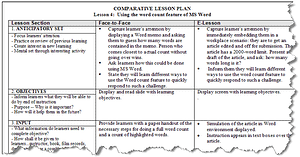If you really want to streamline the training development and instructional design process, a good place to start is with the initial training request.
Training requests typically list information about the expected productivity improvements or performance goal for the training. Additional information usually includes the department, sponsor, audience, preferred method (Online, face to face, blended, other) and competencies to be achieved.
In most organizations, the training request process is still basically manual, with email, editable PDFs, Word docs and spreadsheets used extensively to capture information from business stakeholders. But with a little thought and some better technology, you can streamline this process and speed up development.
Once corporate training and development  (or whoever is responsible) receive a training request, it should flow seamlessly into the training design and development process. Copying and pasting information from one place into another is a sure fire way to add additional time, costs and complexity. Here are a few tips to improve your process:
(or whoever is responsible) receive a training request, it should flow seamlessly into the training design and development process. Copying and pasting information from one place into another is a sure fire way to add additional time, costs and complexity. Here are a few tips to improve your process:
- Leverage work-based chat applications (Slack, Microsoft Teams, etc) to replace email. Not only will you be able to become more efficient and effective in collaborating with stakeholders, but you’ll be able to capture conversations to hold your partners accountable. You can also find collaboration features in Learning Design Systems that may work for your organization.
Think about all the tasks and objectives you need to accomplish during the process. You start with the training request, move to the needs analysis, define the objectives and outcomes, create or curate the content, and then review, preview and deploy.
Ideally, there should be a simple way to capture the training request, capture the requirements at whatever level of detail is provided, and seamlessly collaborate with the originator and others. And this should continue as you move into the needs analysis and then downstream into the design, development, delivery, and content management. Without a systematic way to organize and manage this, you will wind up with a collection of disparate documents and forms with duplicate information, which will lead to errors and delays.
 If you want to streamline the training development and instructional design process, you need to provide tools to your stakeholders and subject matter experts that are easy to use and automate as many of these tasks as possible. A good learning design system can help you do this.
If you want to streamline the training development and instructional design process, you need to provide tools to your stakeholders and subject matter experts that are easy to use and automate as many of these tasks as possible. A good learning design system can help you do this.





